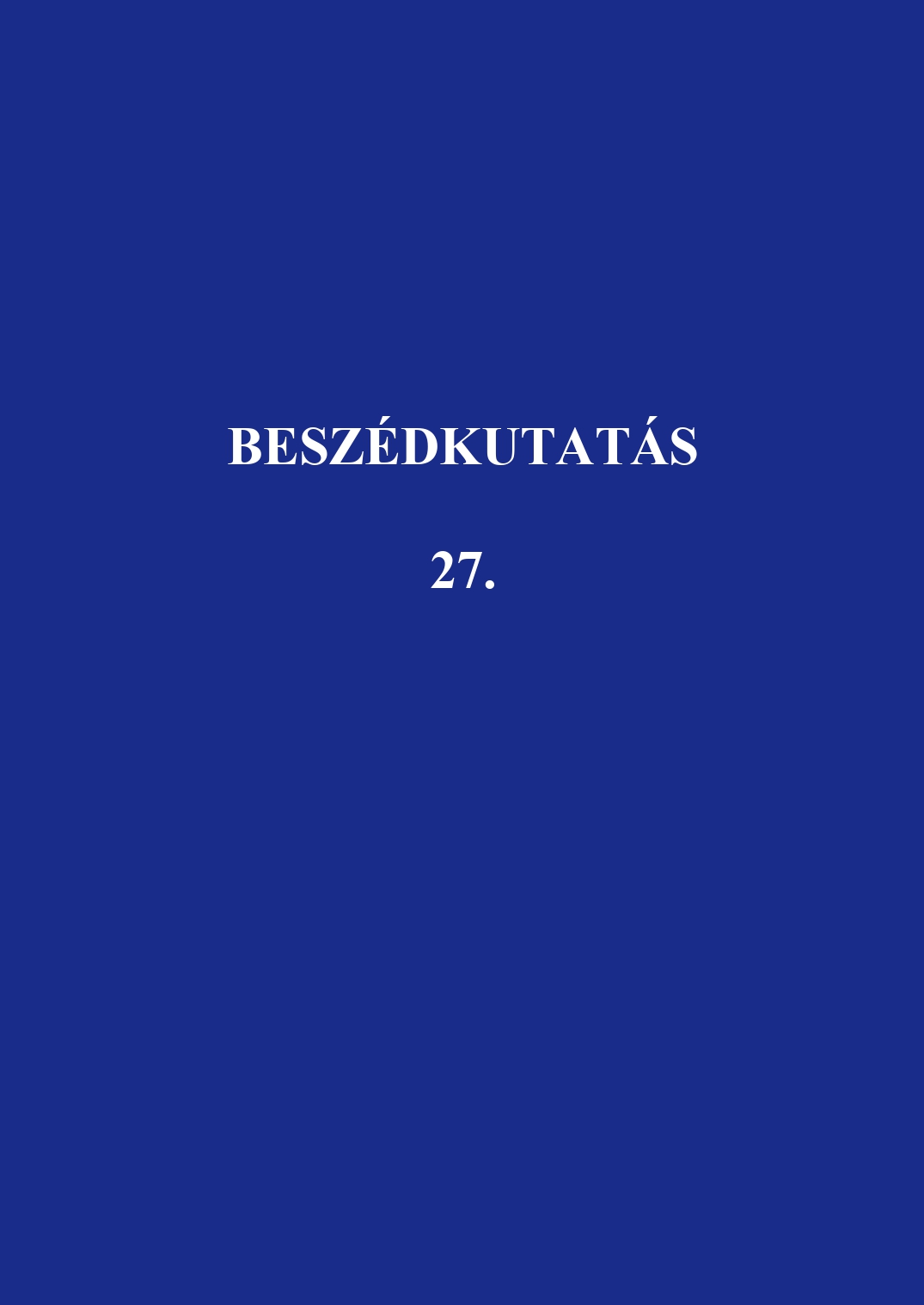Társalgás, beszélőváltás és diskurzusszerveződés új megközelítésben – fonetikai jellemzők és pragmatikai tényezők összefüggései magyar társalgásokban (pilot study)
Absztrakt
Conversation, turn-taking and discourse organization: new insights on the interface of phonetics and pragmatics in a Hungarian conversation. A pilot study
One of the most important way of language use is conversation (verbal interaction or spoken discourse). Phonetic details play crucial role in it, however, there are only a few research studies on phonetic aspects of Hungarian conversations and their connections with the pragmatic dimension. The aim of this paper is to analyse the organisation of a Hungarian conversation from a complex pragmatic and phonetic view, bringing together phonetic analytic techniques and methods of Conversation Analysis in the framework of a functional pragmatic approach. The main question was what the characteristics of the turns and turn-taking system were and how phonetic features interact in them with pragmatic aspects. Furthermore, we investigate two less-discussed, but important topics as well: the presence and possible factors of extensive prediction in turn-taking system and the connections of phonetic patterns with global discourse structure units. One recording from Hungarian Spontaneous Speech Database (BEA) was used for the study. Three female speakers participated in the conversation: their age and level of education were the same, and they have known each other for years. The material was manually annotated in Praat, the annotation contained the utterance and the word level of each speaker, the overlapping speech, the turns and turn-takings. The frequency, the duration and main pragmatic characteristics of local discourse units were analysed on the one hand. On the other hand, the global structure and timing of the discourse were analysed in terms of the narrative and interactive discourse periods. The results showed that both short pauses and overlapping speech have been common during the turn-takings. The result also shed lights on that half of the turn- takings were carried out in less than 400 ms; these data refer to the extensive prediction of turn-taking based on syntactic, prosodic and pragmatic features of turns.
A Beszédkutatásba leadott tanulmányokat máshol változatlan formában megjelentetni nem lehet. Más személy a szerkesztőbizottság engedélyével és megfelelő hivatkozással használhat fel ábrákat a publikált tanulmányokból.





